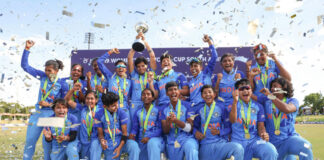MARCH 22, 2021

The Tatopani crossing in the east, similarly, opened up in October 2020 after several months of shutdown, but here, too, traders reported similar problems as in Rasuwa.
The closure of the borders—despite the damage wrought by the pandemic and because of China’s insistence that Nepal had not established adequate screening procedures—once again highlighted the unequal nature of bilateral relations. Nepal was unable to convince China about its safety processes, and the latter ignored the fact that the Tatopani and the Rasuwa crossings had emerged as important trade routes for Nepali entrepreneurs and transporters in the aftermath of the 2015 Indian blockade.
Back in April 2019, however, these issues had not come to the forefront. At that time, when I visited Rasuwa, there was a newfound sense of importance attached to the Rasuwa crossing, especially because the Tatopani border was closed at the time. Those who drove goods back and forth from Gyirong [in Tibet] were a busy lot; several locals, including my driver Krishna, had invested in container trucks. Through a few enquiries, I finally met with Rajesh the evening before he was to leave for Gyirong.
Rajesh told me China’s border infrastructure was incredibly efficient.
‘There’s a two-lane road that easily allows two trucks to pass. They’ve built a proper highway with drains, walls and tunnels in sections where landslides are common.’ The train is yet to reach Gyirong, but labourers have told Rajesh it would come in two years. ‘No one talks about the train to Kathmandu in Gyirong,’ he said. Reports suggest the Shigatse–Gyirong line will be built by 2022.
The Nepal Army has built a shorter route to Rasuwagadhi, but it is replete with stories of rocks falling on vehicles from above. I asked Rajesh about its usefulness, and he shakes his head vigorously. ‘Not at all. It’s a very risky road. There are rock falls through the seventeen-kilometre stretch, and there are no drains either.’ Just the day before we left for the border, a truck had overturned and fallen into the river. ‘The road is wider than the existing one. But they need to build drains and walls.’
Rasuwagadhi is also where the fabled train from Gyirong to Kathmandu will enter Nepal. The train, if it arrives, will render the road obsolete, but more importantly, it will signal China’s ability to overcome the Himalaya as a strategic and economic barrier in the same way that the Lhasa–Kathmandu road did in the 1960s. When the Qinghai–Tibet Railway (QTR) opened in 2006, it was a huge accomplishment, a miracle of engineering with the world’s highest altitude line built on permafrost. It used heat-regulating technology called thermosyphons, cooling sticks dug deep into the ground every few metres. Beijing’s ambitions about a railway line in Tibet go back to the early days of the twentieth century, when Sun Yat-Sen thought a trans-Tibetan railway would strangle Britain’s hold over Tibet. Mao’s attempts to extend the line from Xining in Qinghai to Tibet in 1959 were interrupted by a shortage of funds and ‘the Three-Year Disaster’ between 1959–62, a famine that was the result of the Great Leap Forward. It was not until the early years of the twenty-first century that Mao’s dream would come true.
Economic considerations aside, the QTR is the culmination of more than half a century of Chinese ambitions on the Tibetan plateau. When Communist forces occupied Tibet in 1950, Lhasa was better connected with India and Nepal (via the old trade networks) than with China, which galled the early leaders. They immediately went about severing the old connections in favour of the Chinese mainland, especially as the border dispute with India grew. The lack of infrastructure on the plateau limited Beijing’s geopolitical ambitions in South Asia too. While Mao raised the matter of a train to Nepal during King Birendra’s 1973 visit, in 1975, Deng Xiaoping, as vice-premier, told US President Gerald Ford and Secretary of State Henry Kissinger that China’s role in Nepal was ‘limited’ at that time, but ‘perhaps things will get better when our railroad into Tibet is accomplished’.There is also a disconnect in how Kathmandu and Beijing each view the proposed cross-border railway. While the former sees it as a tool to extricate itself from the economic dependence on India, the latter sees it both as a tool of geopolitical power projection as well as an entry route into north India’s populous markets for Chinese products. This disparity in how the two countries view the railway has been apparent since the opening of the QTR.
Kathmandu’s gigantic pursuit of a train from Lhasa began in 2006. As the QTR bullet-trained its way to Lhasa, Nepal requested China to extend the QTR from Shigatse to the border in 2008. However, a high-ranking Tibetan official called Nepal’s request ‘a beautiful dream in Nepali hearts’, despite a new turn in bilateral relations post the declaration of the Nepali republic. When the QTR line to Shigatse opened in August 2014, Nepali politicians continued to push China to extend it to the border and onwards to Kathmandu. By the end of that year, China agreed to extend the rail link up to the border, ‘urging Nepal to conduct a feasibility study for the same within its territory’.
While the April 2015 earthquake caused much of the talk between the two countries to shift towards relief and reconstruction, it was the September 2015 ‘unofficial’ Indian blockade that gave the project a much-needed fillip. The blockade, during which China offered assistance despite logistical constraints, served as the final nail in deteriorating relations between Delhi and Kathmandu. Nepal immediately signed an agreement to import petroleum products from China, breaking India’s monopoly over the supply. During Prime Minister K.P. Oli’s 2016 visit to China, Nepal signed several agreements, including one to use China’s ports and another to build an international airport in Pokhara. Oli pitched for Nepal’s inclusion under the Belt and Road Initiative (then called ‘One Belt One Road’), hailing the bilateral relationship as an ‘all-weather’ one. The visit ended with a joint statement that, among others, committed to ‘constructing cross border railways and railways network in Nepal, and support enterprises to start related preparatory work as soon as possible’.
But how much of this translates to action remains to be seen. When the first feasibility study was submitted by China CAMC Engineering Ltd in July 2016, it contained a study not just of the Gyirong–Kathmandu railway, but also one on Kathmandu–Pokhara railway. The former section was estimated to be 121 km in length, with nearly 80 km of bridges and 10 km of tunnels. In May 2017, Nepal formally joined the BRI. The train continued to remain high on the agenda of bilateral visits, especially as Nepal wanted it to come under the BRI initiative. Nepali ambitions had grown; the Gyirong–Kathmandu stretch was to be linked with another proposed 945 km East–West railway network. Oli’s June 2018 visit then sealed an MoU on ‘cooperation for railway connectivity’, heralded as ‘the most significant initiative in the history of bilateral cooperation’ which would initiate a ‘new era of cross-border connectivity between the two countries’.
However, the question of funding continues to plague the project. A pre-feasibility report submitted in December 2018 estimated the train would cost NPR 3.55 billion per kilometre, or NPR 28.55 billion annually for nine years. The detailed project report (DPR) itself would cost NPR 35 billion and take two years to complete. Nepal wants China to fund the DPR, but China wants it to split the bill. And although the project is now one of nine listed under BRI in Nepal, there has been little progress since. There have been reports that China had offered Nepal NPR 2 billion as a grant to fund either the DPR for the Gyirong–Kathmandu railway or to fund two feasibility studies for the Kathmandu–Pokhara and Pokhara–Lumbini railways. But much of the initial fervour around the train—Prime Minister Oli’s primary election plank—has died down, among funding issues and worries of a ‘debt trap’. There is also widespread agreement the project will not gain momentum until the Shigatse–Gyirong line is finished. What’s more, the agreement to upgrade the Rasuwagadhi–Kathmandu highway is also an indication that, despite public bluster, the train to Kathmandu is not an immediate priority for Beijing.
On the Nepali side, there are a number of key issues. Apart from debt and infrastructural challenges, Nepal also has to negotiate the Chinese plan to extend the railway up to India’s borders. If China’s end goals from the railway are to reach India’s markets, a train through Nepal may not necessarily make economic sense, especially if relations between the two heavyweights continue to sour post the June 2020 Galwan violence. Further, even if a railway to Kathmandu is built, the question of what Nepal can export to China remains. And finally, as with many things related to China, the entire project hinges on Beijing’s will. Nepal has admitted it does not have the requisite technical skills required to complete the project. If China believes Nepal’s affiliations may be shaken by the US or by India’s pushback, it may well step back and reconsider the project.
Back in Kalikasthan, Rasuwa, these intricacies of the power corridor seemed distant. Talk of the train was rather subdued. One evening, I sat with a group of locals drinking tea and asked them about it. ‘We’ll see when the train comes,’ one of them said. ‘If the Chinese build it along the river, it may be possible. Nothing seems to be impossible for them in any case.’ My hotel owner, though, had other views. ‘The Chinese will use the train to sell us their products and compete with India. What use will it be for us?’
Courtesy/Source: The Print

































































































